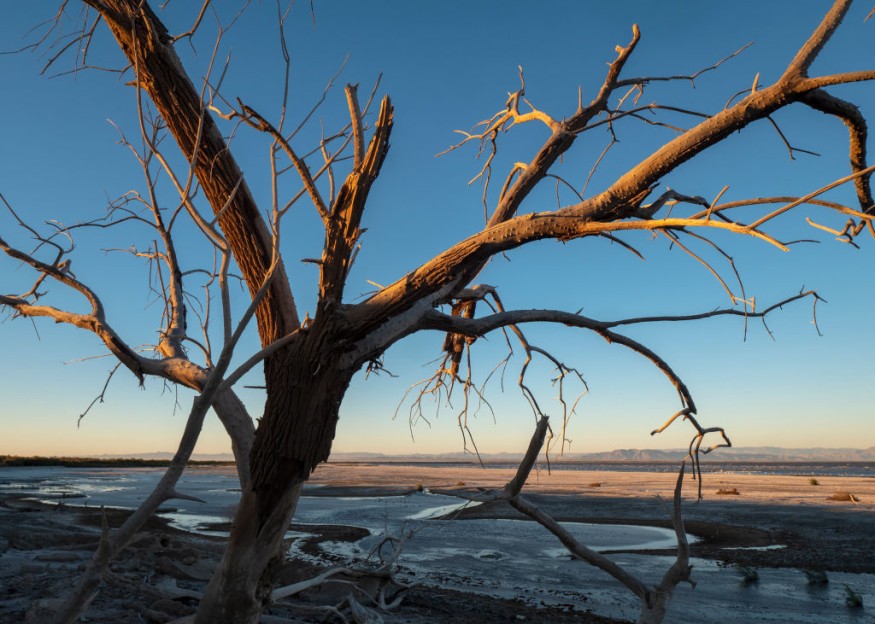
The Salton Sea, the remains of an ancient lake, has a rising water level pressuring the San Andreas Fault, which might lead to large earthquakes.
A now-dry prehistoric Lake Cahuilla might have exerted enough pressure on the San Andreas fault in the past to cause large earthquakes in California. According to research, the loss of the lake may be the cause of the nearly 300-year absence of such earthquakes.
San Andreas Fault and Ancient Lake Cahuilla
The San Andreas Fault is the boundary between two enormous tectonic plates that lie under the Earth's surface. It extends through California for more than 800 miles, beyond San Francisco and almost as far south as San Diego.
The study discovered that six significant earthquakes on the fault line emerged at times when the ancient Lake Cahuilla was rising, based on geologic and paleoseismic data.
The Salton Sea, the remnant of the old lake, is located near the southern end of the fault. Over the last thousand years, Lake Cahuilla has intermittently filled, but the Salton Sea is currently simply a shallow body of water.
According to Ryley Hill, a University of California San Diego Ph.D. student, the Southern San Andreas Fault, which presents the state of California with its greatest seismic risk, was probably set off by the filling of an old lake known as Lake Cahuilla. We haven't experienced a significant earthquake on this portion of the fault in 300 years, which may be partially explained by the absence of this lake since 1725. Hill is the corresponding author of the new study published in the journal Nature.
Now the Salton Sea
According to the study, scientists are aware that big amounts of water may cause seismic activity. Its role in starting a major earthquake is not widely understood, though.
Experts are concerned about the San Andreas Fault as certain portions seem to be under a lot of stress. They worry that a massive earthquake could be coming as a result.
This study suggests that the Salton Sea's fast filling may have caused this earthquake.
According to Hill, the San Andreas Fault has collected a lot of tectonic stress in this area. Although it is highly doubtful that Lake Cahuilla would re-fill, there is a chance that the Salton Sea may. There are signs to suggest that the rate at which the water level fills may be more important than the lake's overall mass or size in causing an event. Therefore, specialists like Hill may be highly concerned about potentially induced earthquakes on the southern fault if the Salton Sea is fast filling up.
Water affects fault lines by raising the pore pressure, which lowers the line's typical stress.
Water and Seismic Activities
According to Hill, there are two ways pore pressure might rise. The first is that the pore pressure at deep is immediately increased by the weight of the lake at the surface.
Hill said that the second is caused by water leaking into the fault's pores and fissures, spreading down to its depth, and further unclamping the fault. But when the pore pressure rises, it pushes out on both sides of the fault, making it easier to slide and ultimately causing an earthquake.
In addition, a magnitude 6.7 earthquake along the San Andreas Fault is quite likely to strike in some locations during the next 30 years, according to a prior prediction by the US Geological Survey.
There have been instances in the past where earthquakes were caused by water loads. China's Wenchuan earthquake in 2008, which has a connection to the Zipingpu reservoir, serves as one illustration.
The latest research shows how stress variations affected by hydrological loads could be overestimated.
Hill claims that the sophisticated modeling they employ, while considerably more challenging to solve, is more accurate of the natural behavior of the Earth's crust. The fluid diffusion as well as the fluid-solid interaction that takes place, according to their findings, are crucial to take into account.
It is possible to underestimate the potential stress changes brought on by hydrological loads if these effects are not taken into account.
Hill also noted that massive artificial reservoirs likely contributed to catastrophic earthquakes. There is precedence for the possibility that seismicity and natural loads may be related. The team is hoping that their findings will throw fresh light on these naturally occurring and human-created situations all over the world since it demonstrates some of the underlying mechanisms at play in the process, Newsweek reports.
© 2025 NatureWorldNews.com All rights reserved. Do not reproduce without permission.





